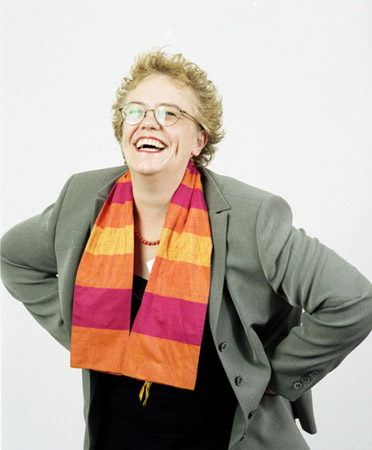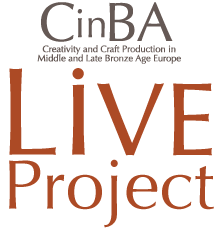Creativity and Craft Production in Middle and Late Bronze Age Europe offered an exciting opportunity for students in UK institutions studying contemporary craft subjects. The CinBA project provided access to a number of objects through a resource pack produced by Dr Jo Sofaer and object handling seminars. The students were able to gain insight, “into the fundamental nature of creativity by exploring a part of European history not influenced by contemporary concepts of art.” (Sofaer, 2010).
Then as now there was unprecedented flowering of craft activity with developments in decorative motifs, techniques and skill. Can we say that craft is shaped by its perception as an accessible form, often preoccupied with the ordinary, the everyday, the repetitive, the functional, the decorative and the mundane? If so, one of its functions is to make us look twice at what seems everyday, through the dedicated application of skill, the tactile and the material. Objects, things we carry with us, are markers of complex personal histories and it is in this sense that they take on the cultural markers of memory and of time. Objects tell stories of our relationship to the world and to others and they offer a material base not just in terms of production – hand, industrial or even electronic media – but in relation to how we consume them, long for them and even obsessively collect them. Objects can be ‘possessed’ by the self in many surprising ways. A specific example of this historically might have been the knife that a person has carried around and used for many years, killing, cutting, protecting which through its use will have gained a specific ‘hand shaped’ wear, information carried about who used it and how it was used. So because of the knife’s materiality, the fact that as a hard object it is relatively stable, it “can preserve information about ‘how to cut’ for tens of thousands of years.” (Flusser, 1990).
Material is of prime importance since the very matter of the object has to represent and even exceed other kinds of economic value in order that it may perform an alchemical role in soldering the reality of things to their spiritual equivalent and the preservation of its memory use in life. Objects remain significant; its very material ‘thingness’ is tangible but any security, which is offered in one moment, is undone by a traumatic shift that directs us to mortality. Several student works reference the possible stories behind the Bronze Age objects, where they came from, what they were used for. For example, “The blank unknown areas gave me scope to make up a story”, memorial tokens that enable the grieving process, or how the relationship with symbols in modern western society are articulated through new forms of crafted objects relative to the individual throughout life and also in death.
However, and as explored in ‘Curating, Craft and New Technologies’ (Craft Curators Forum, a networking and discussion event from the Crafts Council, London 23-24 September 2010), capturing the richness of heritage practices through digital curation can be challenging. How do social media reframe our understanding and experience of heritage? What are the new possibilities for opening up ways of interacting with heritage objects and concerns? In this instance, CinBA provided an exciting collaboration offering new ways of articulating practice-based research in the crafts in an inter-disciplinary and international arena. Using Bronze Age objects as sources for their own practice (motifs, design, whole objects or parts of objects), students developed work from within a range of materials and inspirations thereby engaging in how new types of heritage experience maybe generated through imaginative interpretation of prehistoric objects. The challenge is how to mediate the qualities of the prehistoric world with the contemporary present through on-line experience. This gives insight into the process of production but we will not be able to ‘touch’ what we see. Once we have a natural haptic display we will be able to touch objects that are either too delicate or too distant to touch directly. The access provided by touch can be extremely intimate and evocative. When we have integrated touch into the digital interaction with historical collections and catalogues, contemporary works, and makers’ stories we will have fundamentally transformed museum visitor’s (both physical and web-based) relations with objects and between each other.
The on line exhibition, which remains until the end of the CinBA Project in September 2013, has been drawn from photographs of the work that the students have produced alongside sketches and notes that tell the story of how the Bronze Age objects have inspired them. What we can see is a diverse cornucopia of intriguing, classically produced and hybrid creations that reflect contemporary issues and concerns.
Prof Janis Jefferies
Professor of Visual Arts
Goldsmiths University of London
On line curator, Live Project
March 2012

